This article delves into the evolution of cleaning strategies post-pandemic, examines the implications of over-disinfection, and explores sustainable approaches to balance effective disinfection with microbial safety.
Evolution of Cleaning and Disinfection Practices
Heightened Awareness and Rigorous Protocols
The onset of COVID-19 heightened public consciousness regarding the importance of cleanliness in preventing disease transmission. In response, facilities worldwide implemented stringent cleaning and disinfection protocols. Healthcare settings, in particular, intensified their environmental cleaning routines to reduce indirect transmission of SARS-CoV-2. Thorough cleaning and disinfection of equipment and surfaces became paramount in these environments.
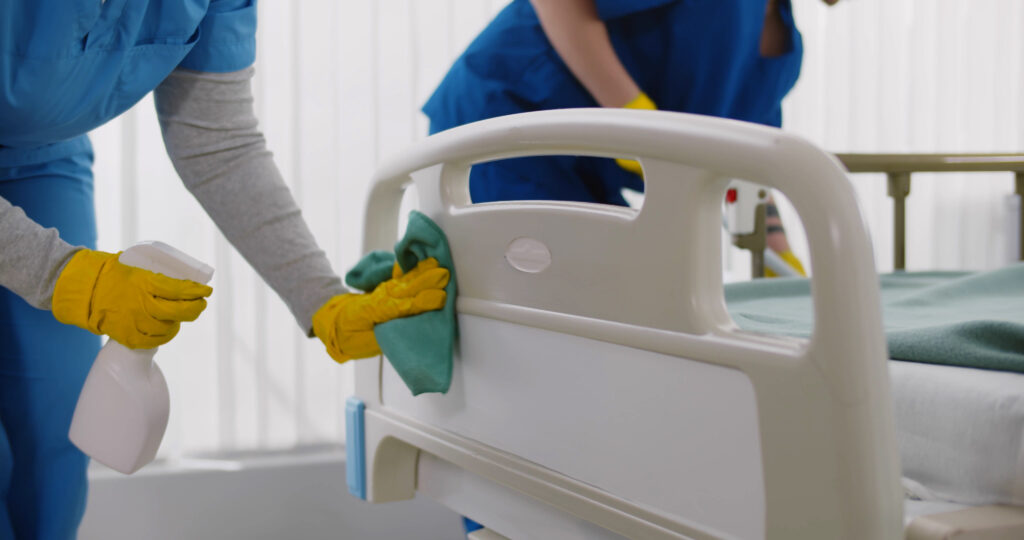
The Rise of Electrolyzed Water Technology
Electrolyzed water technology, often referred to as e-water, did not originate during the COVID-19 pandemic, but its adoption surged as facility managers sought safer, non-toxic alternatives to conventional chemical disinfectants. E-water is produced through a process called electrolysis, which splits a saltwater solution into two highly effective solutions: a disinfectant (hypochlorous acid) and a degreasing cleaner (sodium hydroxide). These solutions are powerful against a broad spectrum of pathogens—including viruses, bacteria, and fungi—while remaining gentle on people and surfaces.
What made electrolyzed water particularly appealing during the pandemic was its ability to deliver hospital-grade disinfection without harmful fumes, residues, or the need for PPE. As the public and cleaning professionals became increasingly concerned with the long-term exposure to harsh chemicals, especially in sensitive environments like schools, senior living communities, and healthcare facilities, e-water emerged as a compelling option for ongoing, frequent disinfection.
Facilities began to invest in on-site generation systems like Viking Pure to produce electrolyzed water as needed, reducing reliance on chemical supply chains and lowering environmental impact. As a result, what was once a niche technology became mainstream, representing a significant shift in how facility managers approach cleaning for health and safety in a post-pandemic world.
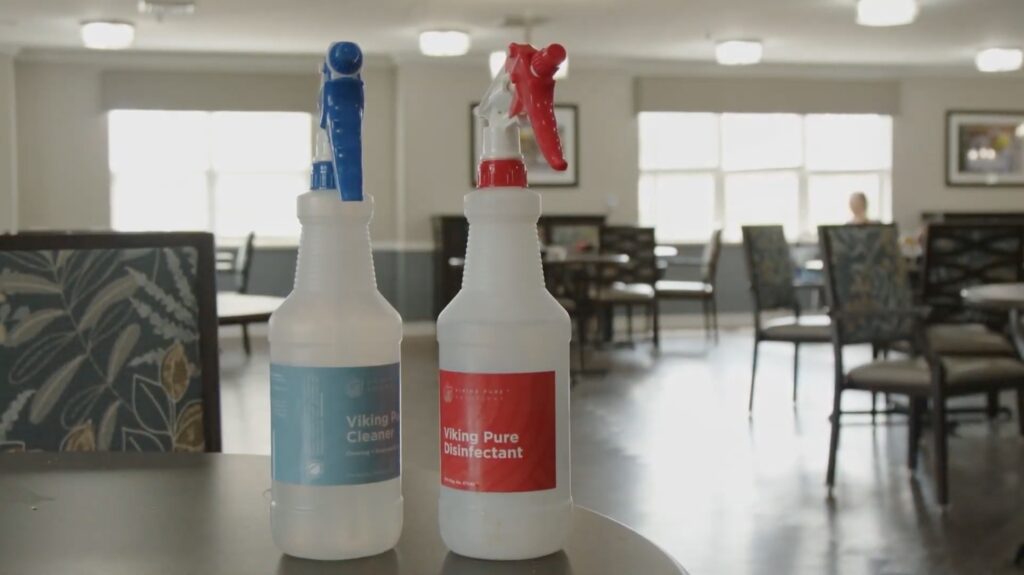
Screenshot
Long-Term Changes in Various Facilities
Healthcare Settings
In healthcare facilities, the pandemic underscored the critical role of infection prevention and control (IPC) practices. Standard precautions have become deeply ingrained in healthcare protocols, including proper hand hygiene, appropriate use of personal protective equipment (PPE), and rigorous cleaning and disinfecting routines. These measures are essential to prevent healthcare-associated infections and ensure patient safety.
Public Spaces and Commercial Establishments
Beyond healthcare, public spaces and commercial establishments have also adopted enhanced cleaning practices. Visible and frequent cleaning routines have become the norm to reassure the public and maintain a safe environment. The increased use of disinfectants in these settings aims to reduce the risk of surface transmission of pathogens.
Educational Institutions
Educational institutions have implemented comprehensive cleaning protocols to safeguard students and staff. Regular disinfection of classrooms, restrooms, and common areas, along with promoting hand hygiene and respiratory etiquette (e.g. covering your mouth when you cough or sneeze), are now standard practices. These measures aim to create a conducive learning environment while minimizing the risk of infectious disease transmission.
Antimicrobial Resistance and the Consequences of Over-Disinfection
Understanding Antimicrobial Resistance
Antimicrobial resistance occurs when microorganisms, including bacteria, fungi, parasites, and viruses, evolve mechanisms to withstand the effects of antimicrobial agents. This resistance renders standard treatments ineffective, leading to persistent infections and increased risk of disease spread, severe illness, and death. The overuse and misuse of disinfectants and antimicrobials are significant contributors to the development of AMR.
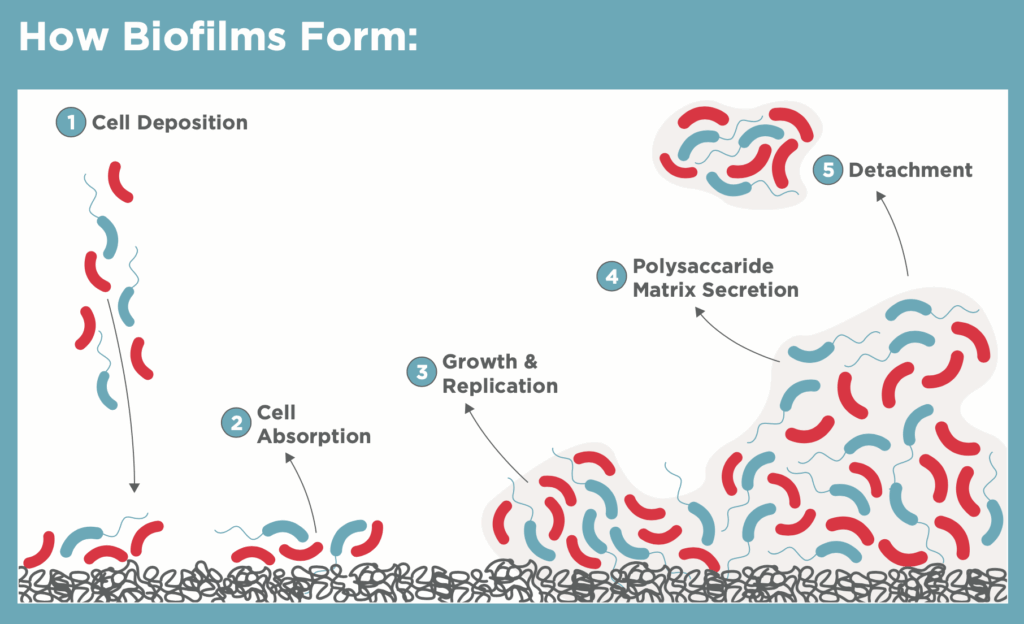
Biofilm Formation and Its Implications
One of the critical challenges associated with over-disinfection is the promotion of biofilm formation. Biofilms are complex communities of microorganisms that adhere to surfaces and are encased in a protective extracellular matrix. This structure enhances their survival and resistance to antimicrobial agents. Bacteria within biofilms can exhibit a 10 to 1,000-fold increase in antibiotic resistance compared to their planktonic (free-floating) counterparts.
The extracellular matrix of biofilms can impede the penetration of disinfectants and antibiotics, reducing their efficacy. Additionally, biofilms facilitate the transfer of resistance genes among bacteria, accelerating the spread of AMR. For instance, Pseudomonas aeruginosa biofilms have been shown to protect the bacteria from aminoglycoside antibiotics due to the interaction between the antibiotics and the biofilm’s extracellular components.
In 2019, antimicrobial-resistant infections were directly responsible for approximately 1.27 million deaths, with nearly 5 million deaths linked to drug-resistant infections overall, according to a landmark study published in January 2022. Projections suggest this number could soar to 10 million deaths annually by 2050, surpassing the global mortality rate of cancer.
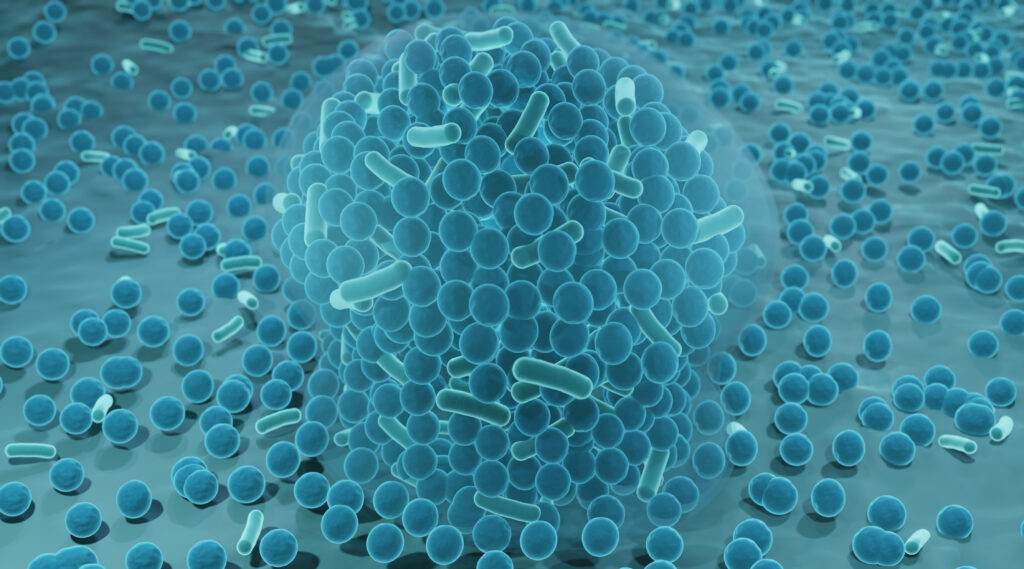
The Emergence of Superbugs
The overuse of disinfectants can inadvertently select for resistant strains of microorganisms, often referred to as “superbugs.” These pathogens are capable of surviving standard disinfection procedures, leading to outbreaks that are challenging to control. The prevalence of antimicrobial-resistant bacteria has reached alarming levels worldwide, posing a significant threat to global public health and necessitating urgent intervention.
Balancing Effective Cleaning with Preventing AMR
Evidence-Based Cleaning Practices
To mitigate the risk of AMR while maintaining effective sanitation, it is crucial to adopt evidence-based cleaning practices.
Judicious Use of Disinfectants
Limiting the use of disinfectants to situations where they are truly necessary can help prevent the development of resistance. Overuse of potent disinfectants, such as bleach, can pose health risks due to exposure to hazardous chemicals and contribute to the selection pressure that drives AMR. Experts recommend using fewer products, opting for multipurpose cleaners, and minimizing reliance on strong disinfectants unless warranted by specific circumstances.
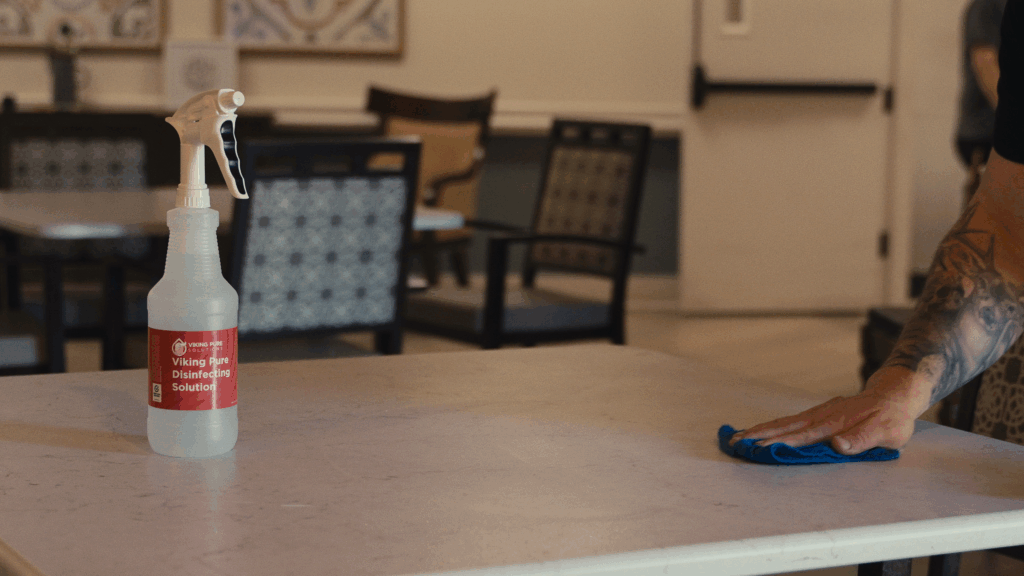
Hypochlorous Acid (HOCl) and Its Efficacy Against COVID-19
Hypochlorous acid (HOCl) is a powerful yet gentle disinfectant that has been in use for decades, but gained renewed attention during the COVID-19 pandemic for its ability to inactivate a broad spectrum of pathogens, including viruses, bacteria, and fungi. HOCl is naturally produced by the human immune system—specifically by white blood cells—as a defense mechanism against invading microorganisms. When replicated through electrochemical processes (e.g. electrolyzed water technology), HOCl can be used as a topical disinfectant that is both highly effective and non-toxic.
Numerous studies have demonstrated HOCl’s ability to disrupt the lipid envelope of viruses, including SARS-CoV-2—the virus responsible for COVID-19—making it an effective tool for surface disinfection. Its fast kill time, low toxicity, and neutral pH make HOCl particularly suitable for use in sensitive environments such as schools, healthcare facilities, and senior living communities, where frequent disinfection is necessary but harsh chemicals may pose risks to occupants.
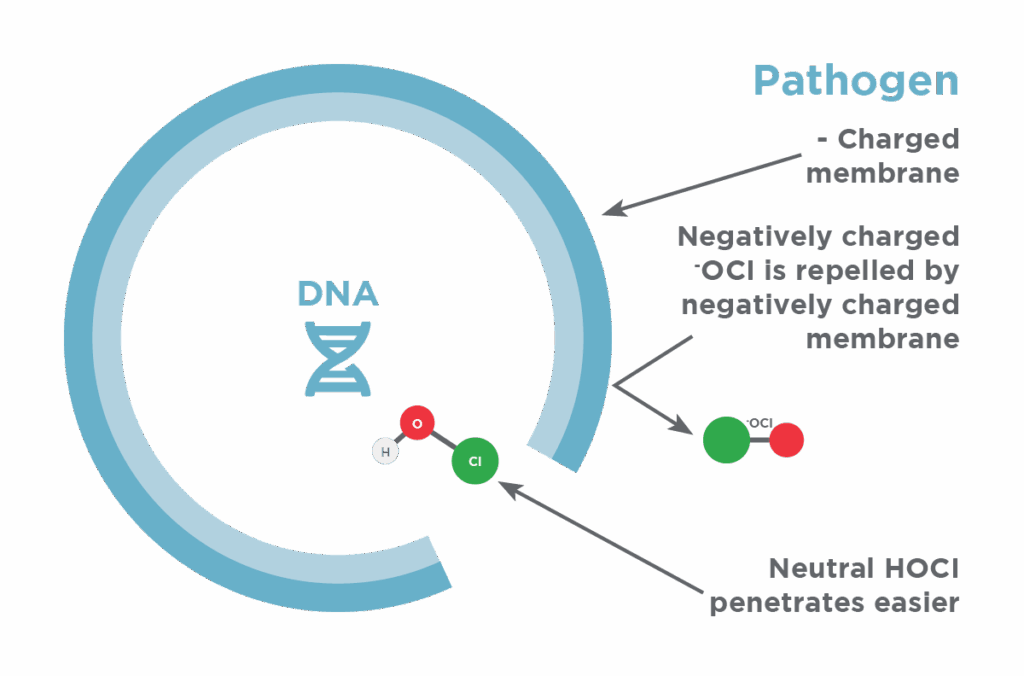
The Environmental Protection Agency (EPA) recognized the efficacy of certain HOCl products by including them on List N, which identifies disinfectants approved for use against SARS-CoV-2. However, it’s critical to note that not all HOCl solutions are created equal so each HOCl product needs to be evaluated based on its own merits. As demand for safer, environmentally friendly disinfection options continues to grow, hypochlorous acid stands out as a viable alternative, provided users select high-quality, properly formulated products and follow manufacturers’ usage guidelines.
In Summary…
The COVID-19 pandemic served as a global wake-up call, reshaping how societies think about cleanliness, disinfection, and public health preparedness. From hospitals to schools to commercial facilities, cleaning protocols have been permanently elevated, incorporating new technologies and more rigorous standards to safeguard communities against infectious diseases.
However, the surge in disinfection has also introduced unintended consequences. The overuse and misuse of chemical disinfectants have contributed to the rise of antimicrobial resistance (AMR) and the proliferation of hard-to-eradicate biofilms and superbugs. These developments underscore the need for a more thoughtful, science-driven approach to sanitation—one that prioritizes efficacy without compromising long-term microbial balance or human health.
Innovations such as electrolyzed water and hypochlorous acid are emerging as critical components in this new era of infection prevention. They offer powerful antimicrobial action without the toxicity and environmental harm of traditional disinfectants, and in many cases, they’re safer for both people and the planet. But not all disinfectant solutions are created equal. As facility managers and cleaning professionals continue adapting post-pandemic protocols, product selection must be guided by regulatory validation, independent testing, and a deep understanding of how disinfection practices affect microbial ecosystems.
Moving forward, sustainable cleaning strategies must strike a balance: effectively mitigating the risk of infectious disease while reducing our collective dependence on chemicals that may contribute to AMR. The future of hygiene lies in smarter, safer solutions—and in the commitment to protecting not just surfaces, but the health of every person who interacts with them.




